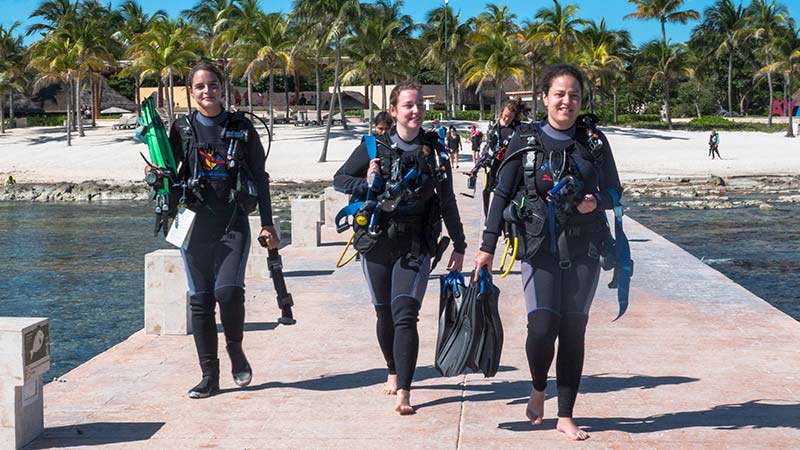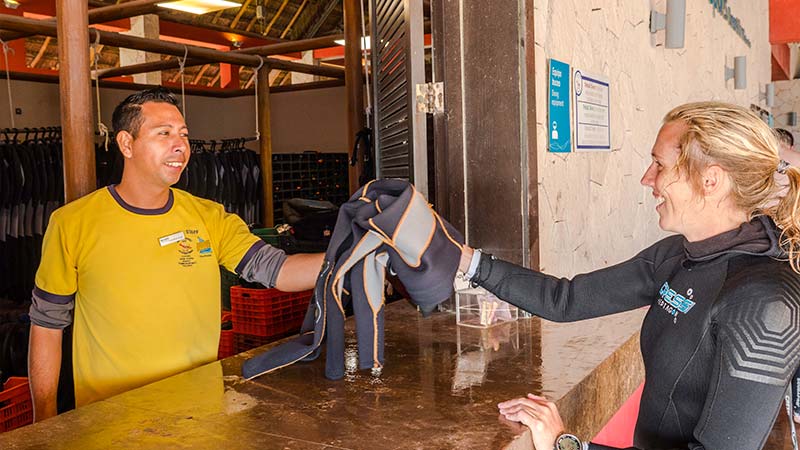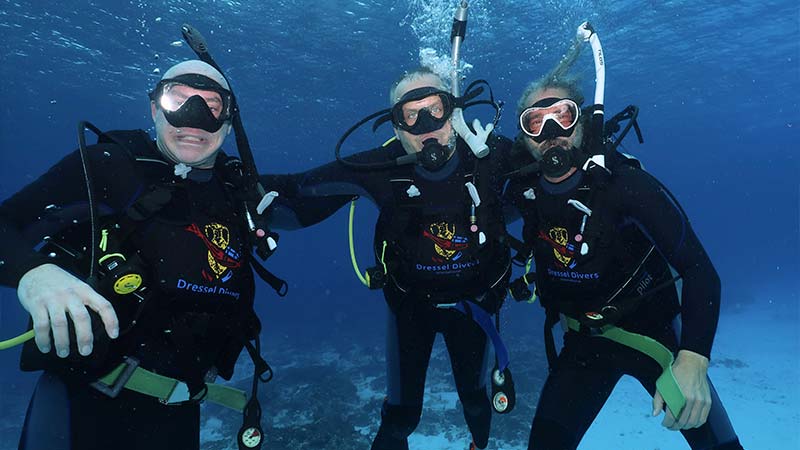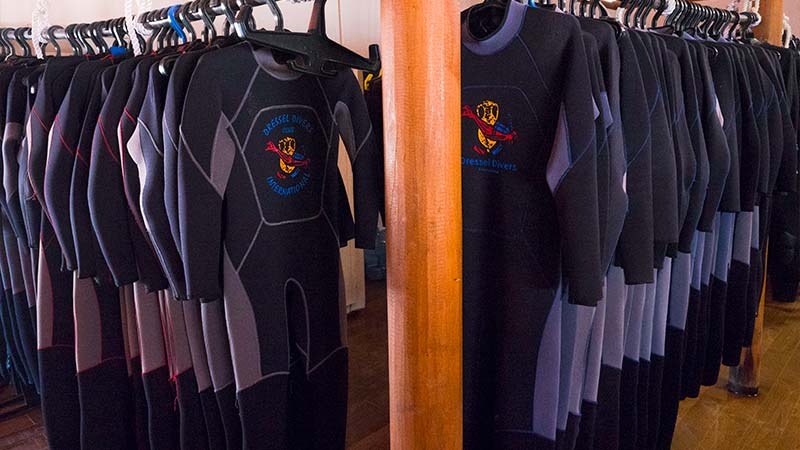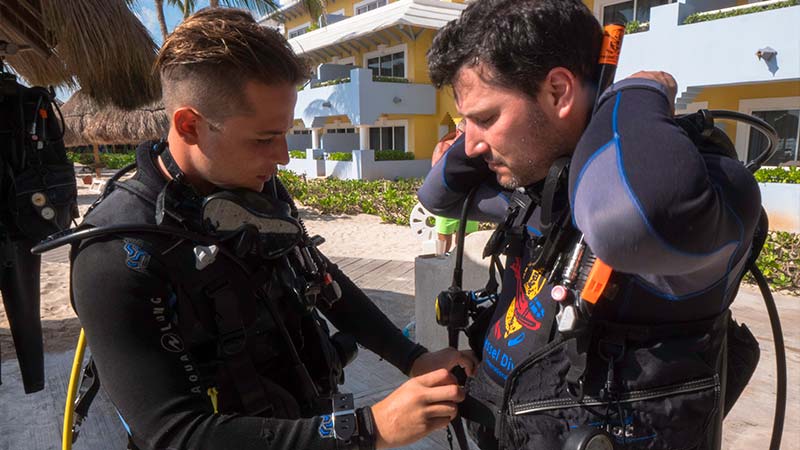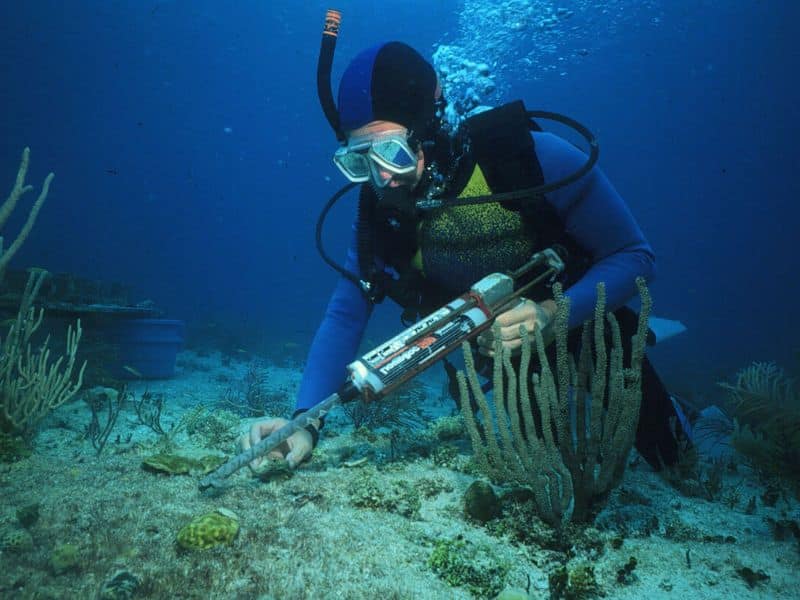4. How To Choose a Wetsuit For Diving?
- When To Buy Your Scuba Suit?
Recreational divers in temperate areas often purchase their first diver suit during or after Open Water training.
However, if you only plan to dive a few times a year, it may be more cost-effective to rent gear instead of buying it. On the other hand, if you plan on diving more than 20 times annually, the cost of renting will surpass the cost of owning gear. To determine the best option, calculate the cost of each use of your suit and compare it with what it costs to rent at your preferred dive center.
Keep in mind dry scuba suits require special training and should only be bought after completing a specialty course.
- What Are Scuba Diving Suits Made Of?
They are made of neoprene, which is a flexible, comfortable material that adapts to the body for a perfect fit. There are two types of neoprene: open cell neoprene and closed-cell neoprene.
Open-Cell Wetsuits lack an internal lining, so, have direct skin-to-neoprene contact and are “semi-dry”, because they prevent water from touching the skin. Closed-Cell Wetsuits have an internal lining that allows water to enter and come into contact with the skin.
As we said before, the suits have different thicknesses for diving in water at different temperatures. Thicker suits offer more protection. You can know more about it in the article “Scuba Wetsuit Thickness Guide”
Most scuba diving costumes have a zipper, usually in the back, to get in and out of the suit easily.
It is also important to consider the stitching and sealing of the scuba suit to prevent water from seeping in, double blind stitches being more effective, but also adding to the price. Remember to ask about the stitches of your diving suit before buying.
Regarding dry diver suits we can find:
Closed-cell neoprene dry scuba suits are constructed using similar materials to the other scuba suits, however, they feature a waterproof design with air valves.
On the other hand, shell-style dry-dive suits can be crafted from lightweight trilaminate, latex-covered canvas, crushed neoprene, or a blend of materials.
- How to Choose the Perfect Scuba Diving Suit Size?
To select the right wetsuit size, consider the following:
Breathing: ensure that the wetsuit allows you to breathe normally.
Movement: make sure the wetsuit is not too tight and allows you to move.
Neoprene fit: the wetsuit should fit snugly against your skin, without any large air pockets.
Wrinkle-free: avoid wrinkles, except in areas like the armpits, knees, and groin, for ease of movement.
Lower back: check for air pockets in your lower back, as excess space may allow water to enter.
Genital fit: the wetsuit should fit snugly in the genital area without being too tight or too loose.
Ankles and Wrists: the fit should be snug at the ankles and wrists. You can also use adjustable straps if necessary.
Length: the wetsuit should be the right length, neither too short nor too long. Consider a two-piece wetsuit if needed.
Hood: the hood should fit comfortably without causing neck tension or headaches.
Know more about scuba diving suit sizing by following the link.
- Diver Suit Prices, How Much Does a Scuba Suit cost?
When selecting a diving suit, it is crucial to take into account the price and determine if it offers good value. There are various designs, levels of thickness, and features that impact the cost.
The cost of a wet diver’s suit and a dry diving suit can differ significantly. Wet scuba suits can cost anywhere from $100 to over $1000, while dry ones typically range from around $1000 to more than $3000.




